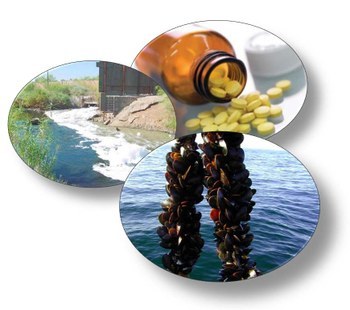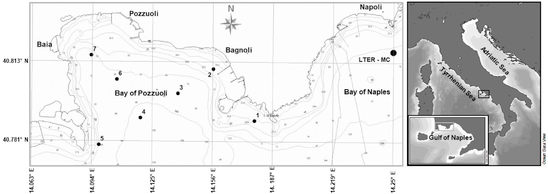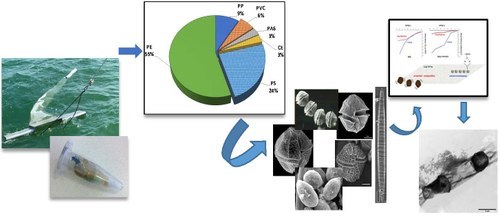Anna Annibali - Mattia Betti - Samuela Capellacci - Stefano Goffredo - Donata Luiselli - Arianna Mancuso - Mauro Marini - Antonella Penna - Milva Pepi - Laura Pezzolesi - Rossella Pistocchi - Eugenio Rastelli - Francesco Regoli - Fabio Ricci - Teresa Sani - Mara Simonazzi

The tools conventionally used in environmental monitoring are based on the detection of chemical and physical parameters of the water column and sediments in specific units of time and space. This type of measurements provides important information on the nature, origin, and intensity of the variations. In addition, chemical analysis can be conducted on marine organisms (both invertebrates and fish) to characterize the presence and the bioavailability of the most important classes of pollutants, to define biological, ecological and environmental factors that influence their bioaccumulation, their possible transfer through marine food webs, and, eventually, the assessment of the potential risk to human health related to food consumption. The distribution of pollutants in the water column is known to be very different and the water masses are in constant flow. Furthermore, contaminants can occur below the threshold values (even lower than the instrumental detection level), and yet their possible additive or synergistic effects can represent a danger for the functionality of ecosystems, for the health of marine organisms, and at last for human health. For these reasons, the measurement of chemical-physical parameters and bioavailability is integrated by the evaluation of the effects that environmental alterations have on organisms, through the study of molecular, cellular, tissue, or organism-level parameters or endpoints that account for the state of health of the organism and any mechanisms of response to environmental stress. These mechanisms are used as stress indicators or sensitive biomarkers to early highlight the first signs of exposure to stress factors both of chemical (e.g. exposure to natural toxins or environmental pollutants) and physical (e.g. changes in temperature, pH, salinity of sea water) nature. The techniques include variations in gene expression, activity of proteins involved in biotransformation and detoxification systems, oxidative stress, genotoxicity.
Considering that two-thirds of the human population live within 100 km of the coast, monitoring and management of coastal zones is a need of fundamental importance. Interactions between ecological, chemical, physical and anthropogenic impacts in coastal areas, have given rise to a complex system. In the Mediterranean Sea, the complexity of the coastal areas, the presence of inhabited areas and the effects of human activities have been addressed above all in relation to the high content of nutritional loads and the phenomena of eutrophication. In addition to nutrient loading, chemical contaminants such as heavy metals, polycyclic aromatic hydrocarbons (PAHs), polychlorinated biphenyls (PCBs) have been released in the past century from industrial sites located near the sea, becoming a major problem even once these same sites of production had completed their life cycle.
The activities that will be carried out at the FMC fit into this context and the monitoring of coastal areas, including coastal lagoon areas, with particular reference to the Mediterranean area. This monitoring activity will be carried out both through microbiological assessments, to detect the presence of faecal bio-indicators and pathogens (Escherichia coli, Enterobacteria, Enterococci, Salmonella spp., Vibrio spp., etc.), and by applying ecotoxicological investigations, for detection of biological parameters (Vibrio fischeri, Phaeodactylum tricornutum, Brachionus plicatilis, as well as a qualitative and quantitative analysis of algal biomass) and chemical-physical parameters (T, pH, Eh, salinity, O2, CO2, total organic C, nutrients, N, P, S, heavy metals, organic contaminants such as PAHs and PCBs, detection of wind intensity, biochemical composition of organic matter, particle size of sediments, etc.).
Making use of a complete monitoring approach for a certain coastal and lagoon area will allow us to have a broad view of the situation and also to identify aspects related to climate change. For this purpose, tests will be carried out to identify microorganisms involved in the fundamental biogeochemical cycles (C, N, S), with the aim of obtaining information on the progress of these processes of fundamental interest and being able to detect any aspects related to climate change.
The purpose of applying this type of approach to monitoring, is to provide a broad view of the situation in coastal and lagoon areas, to identify potential sites with critical issues and to implement any interventions by administrations or bodies responsible for maintaining optimal conditions in the areas under observation.

Coastal monitoring area with sampling stations (from Margiotta et al., 2020 Marine Environmental Research Vol. 160, 104980)

Floating plastics and microplastics are an emerging pollutant and are a long-lasting and persistent substrate for the bioadhesion phenomenon of microorganisms and macroorganisms that allows dispersion to new habitats. It has already been demonstrated for bacteria, plants, toxic microalgae and animals.
Therefore, plastics can act as a vehicle for the entry of toxins into the food web, as well as a potential vector for the dispersal of alien and invasive species. In particular, the role that plastics play both as vectors of biological pollutants in the food chain and as pollutants themselves that can modify the diversity, behavior and functioning of the planktonic fraction (POM) is considered. Molecular analyses of the phytoplankton diversity on plastics through direct qPCR or metabarcoding approaches highlight a species-specific community or plastisphere, the presence of toxic microorganisms and alien and/or invasive species. Phytoplankton is also studied as an indicator of coastal pollution from micro and nanoplastics by observing the physical, cellular and subcellular interactions of plankton with these pollutants.